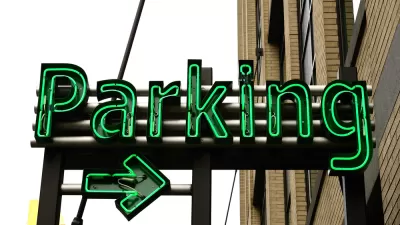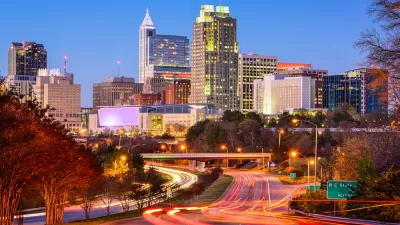It's unclear when the law will take effect, but the Miami City Commission has approved that an ordinance that heads in the opposite direction of current planning trends and even the city's own groundbreaking zoning code.

"Miami commissioners voted 4-1 last week in favor of an ordinance that would essentially force developers to build more parking," according to an article by the Next Miami.
Commissioner Manolo Reyes is quoted in the article saying Miami is "not a pedestrian and bicycle city" and "we don’t have a mass transit system, period."
"Commissioner Joe Carollo also spoke in favor of the ordinance at the meeting," according to the article. "He has previously called developers 'greedy' for wanting to build less parking."
As for the changes proposed by the ordinance: "Developers will be required to build the full amount of parking required by zoning, unless they can get a commission vote to allow a reduction for their specific project. Parking reduction waivers by city planners for projects near transit stops will no longer be permitted."
According to the article, the commissioners overrode the objections of a Miami zoning task force and the city's Planning and Zoning Board in voting for the approval for the ordinance.
According to the Parking Reform Network, Miami waived minimum parking requirements for newly constructed buildings in the city's downtown when it adopted the Miami 21 form-based code in 2009.
Previous coverage, published in February 2022 by the Next Miami, provides more background. Neither article explains whether the ordinance has been fully adopted and when the law would take effect if so. Please let us know in the comments if you have more information.
FULL STORY: Miami ‘Is Not A Pedestrian & Bicycle City,’ Commissioner Says, Before Voting To Require More Parking

Trump Administration Could Effectively End Housing Voucher Program
Federal officials are eyeing major cuts to the Section 8 program that helps millions of low-income households pay rent.

Planetizen Federal Action Tracker
A weekly monitor of how Trump’s orders and actions are impacting planners and planning in America.

Ken Jennings Launches Transit Web Series
The Jeopardy champ wants you to ride public transit.

Crime Continues to Drop on Philly, San Francisco Transit Systems
SEPTA and BART both saw significant declines in violent crime in the first quarter of 2025.

How South LA Green Spaces Power Community Health and Hope
Green spaces like South L.A. Wetlands Park are helping South Los Angeles residents promote healthy lifestyles, build community, and advocate for improvements that reflect local needs in historically underserved neighborhoods.

Sacramento Plans ‘Quick-Build’ Road Safety Projects
The city wants to accelerate small-scale safety improvements that use low-cost equipment to make an impact at dangerous intersections.
Urban Design for Planners 1: Software Tools
This six-course series explores essential urban design concepts using open source software and equips planners with the tools they need to participate fully in the urban design process.
Planning for Universal Design
Learn the tools for implementing Universal Design in planning regulations.
Heyer Gruel & Associates PA
Ada County Highway District
Institute for Housing and Urban Development Studies (IHS)
City of Grandview
Harvard GSD Executive Education
Toledo-Lucas County Plan Commissions
Salt Lake City
NYU Wagner Graduate School of Public Service





























